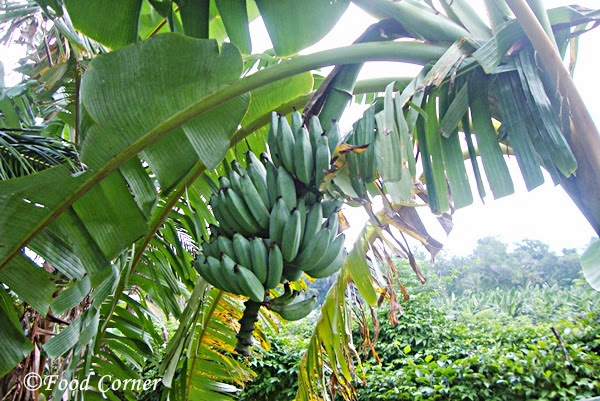There are many languages and dialects in Ghana that are spoken by a wide variety of people but the unfortunate thing is that some children easily forget their grandparents when they die and decide to stick to other people’s languages and forget about theirs.
Thanks to education, multi-culture and modernization, a lot of unique languages from Ghana have become endangered.
Some of the languages have also fused with other languages that dominate the area, making theirs diminutive.
Do you know the number of tongues in Ghana and are you ready to find out those that a dying off? Then come with us as we reveal to you 21 languages in Ghana that are gradually dying out.
1. Vagla
Vagla is a language spoken by a small section of the Damongo people in the Damongo district near Sawla West district. As at 2013, 13,900 people were recorded to be able to speak the language fluently. Majority have adapted to other languages.
2. Adamorobe Sign Language
In Adamorobe, a village in the Akuapim north district, north of Tema, most of the people there could use the sign language and it became so common it seems as if they were all deaf but they weren’t, they were all hearing people. Almost all the 3,500 hearing people in the village could use the sign language. This happened because, in past years, incidence of deafness was as high as 11% in 1961, but it has dropped drastically, to about 1% in 2012, due to a local law enacted in 1975 forbidding deaf people to marry each other. Many of the approximately 3,500 hearing people in Adamorobe village also use Adamorobe Sign Language, to varying degrees of proficiency.
Now due to the percentage drop, many people from the area are beginning to stop using the language and it is gradually diminishing.
Source: Kusters (2012)
3. Adangbe
The Adangbe language can be located among the people of Agotime ethnic group mostly in the Volta region. They are located at the Togo border, east of Ho.
This language is different from the Adangme language spoken by the Ada people.
As at the year 2012, only 4,000 speakers were identified to be fluent with the language, making it an endangered language.
Source: Gblem-Poidi and Kantchoa 2012
4. Tampulma
As at 2003, the language was spoken by 16,000 Ghanaians of the tribe but with time, the number is gradually declining, with other languages fusing into theirs.
Alternative names for the language are, Tampele, Tamplima, Tampole, Tampolem, Tampolense, Tamprusi
It can be located at Northern region, Damongo district, south of Sisaala in 25 villages.
5. Tafi
The language is located at Volta region, north of Ho, near Togo border. East central. As at 2003, 4,400 speakers were identified as being able to speak the language fluently. The language is gradually fusing with the Ewe language.
6. Safaliba
The language can be located among the people of Northern Ghana and it is spoken among the people of, Mandari, Tanyire, Manfuli, and Gbenfu villages.
As at 2013, 5,000 speakers were identified to speak the language fluently, 79% of the the language has been fused with Dagaari.
7. Nyangbo
A test revealed that majority who could speak the language were between the ages of 30 to 50 years, most of the young lads can’t speak it because 72% of the language has been fused with Ewe.
As at 2003, only 6,400 speakers were identified and this language can be located at Volta region, east of Afeyi.
8. Nkami
The language is spoken among the people of Amankwakrom of the Afram Plains district in the Eastern Region. Reportedly similar to the Nkonya language.
As at 2009, only 9,000 people were recognized to speak the language.
9. Nchumbulu
The Nchumbulu language can be located at the Brong Ahafo region near west of lake Volta near Kplang and spoken in 3 villages.
As at 2003, 1,800 people were recognized to speak the language.
10. Nawdm
The Nawdm speakers are scattered in Kpando and Ho districts including the Greater Accra region. The speakers are gradually diminishing due to multi culture.
11. Logba
The Logba language is spoken among the people of the Volta region, south east of Date. As at 2003, only 7,300 speakers were identified.
12. Lama
A few thousands of speakers still identified in the country as at 1996. They can be located in the Northern region between Yendi and Tamale.
13. Kplang
The Kplang language can be found among the people of the Brong Ahafo region, Sene district, south of Volta lake and Yeji town.
As at 2003, only 1,600 speakers were identified.
14. Konni
The Konni language is spoken among 5 villages in the Northern Region, West Mamprusi District. The place is isolated with no roads to most of the villages. As at 2003, 3,800 speakers were identified.
15. Kantosi
The language is spoken among the people of the Upper East Region in the Sandema District, Navrongo, Bolgatanga, Nalerigu, and Kpaliwogo, near Wa.
As at 2003, only 2,300 speakers were identified.
16. Fulfude and Maasina
Widespread in the Northern region with only 4,240 speakers as at 2013.
17. Dompo
It is a language spoken among the people of the Brong Ahafo region. This language is one of the most diminishing languages in the country with only 970 speakers identified as at the year 2000.
18. Chala
It is spoken among the people of the Volta region, specifically among Nkwanta, Odomi, Ago villages; Northern region, Jadigbe village near Seipe, south of Ekumdipe.
As at 2003, only 3,000 speakers were identified.
19. Chakali
The language is spoken among the people of the Upper West region, Wa east district and in the Northern region, West Gonja district. The largest number of speakers can be found in the Ducie village, with 6000 speakers. The language is really endangered and gradually diminishing.
20. Animere
Lowest speakers recorded so far with only 700 speakers. Only a few fluent speakers left in an ethnic group of several hundreds.
The language is spoken among the people of the Volta region in the enclave north of Jasikan town; Kecheibi and Kunda remote villages.
21. Akposo
The language is spoken among the people of the Volta region in the Jasikan district, near Togo border. As at 2003, 7,500 speakers were recorded to still speak the language.
You may want to see some Jamaican patoi words that originated from Ghana.
The post 21 Languages In Ghana That Are Gradually Dying Out appeared first on OMGVoice.Com.































































 blessed Sunday
blessed Sunday























































